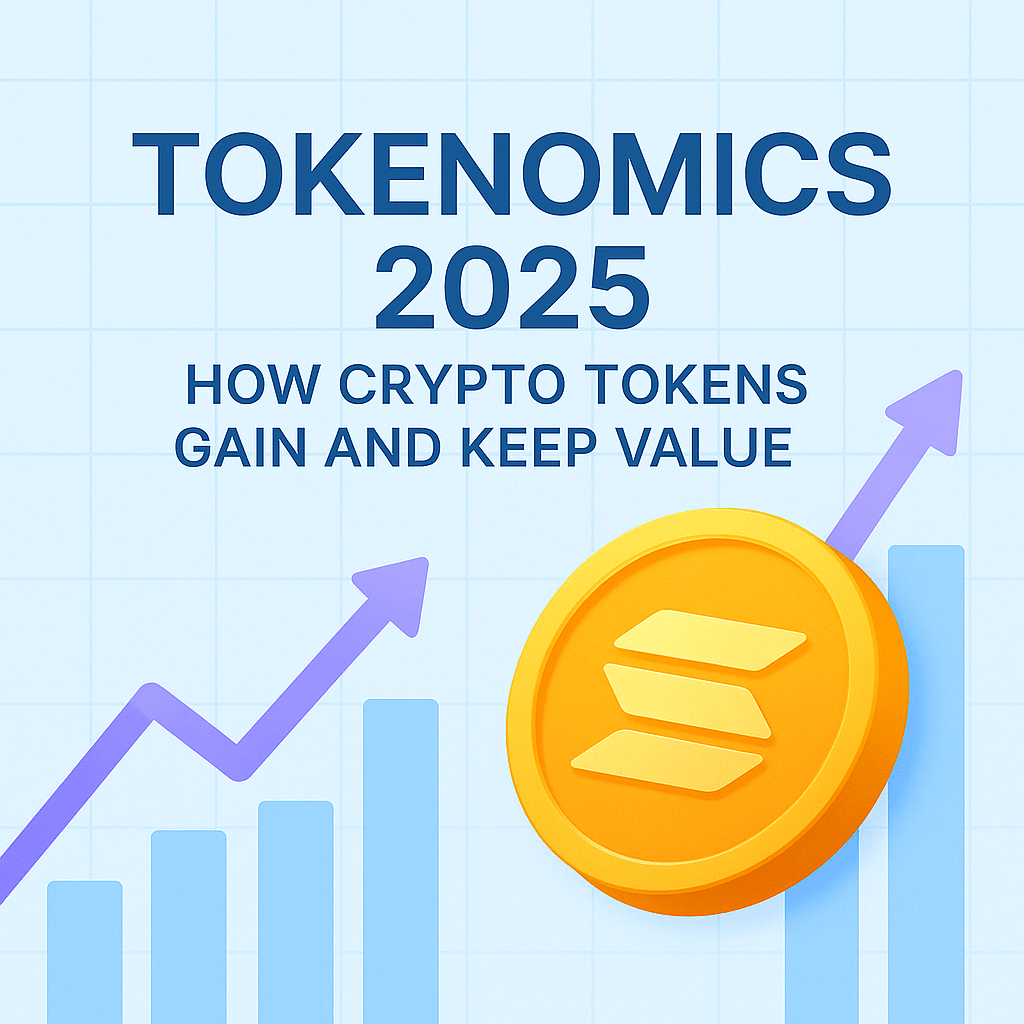Tokenomics, a portmanteau of “token” and “economics,” refers to the economic system behind cryptocurrencies and blockchain-based assets. As the crypto market matures in 2025, understanding tokenomics has become essential for evaluating the long-term viability and profitability of blockchain projects. Whether you’re an investor, developer, or enthusiast, tokenomics is the backbone of decentralized ecosystems.
What Is Tokenomics?
Tokenomics encompasses how a token is created, distributed, used, and burned (or removed from circulation). It defines a token’s supply model, utility, governance rights, incentives for holders, and mechanisms for sustaining its value. In short, tokenomics determines the internal economy of a blockchain protocol.
Key Components of Tokenomics
1. Token Supply
There are two major supply models:
- Fixed Supply (Deflationary): Bitcoin is the prime example, with a capped 21 million token limit. Scarcity often drives value.
- Inflationary Supply: Some tokens (like Ethereum post-merge) adjust supply to maintain functionality and incentive alignment.
2. Token Utility
The usefulness of a token directly affects demand:
- Governance: Holders vote on protocol changes (e.g., UNI, AAVE).
- Payments: Tokens used for fees or services (e.g., SOL, ETH).
- Staking/Yield Farming: Earn rewards by locking up tokens.
- Access Rights: Some tokens grant access to platforms or features.
3. Distribution Models
How tokens are initially and continually distributed can influence decentralization and price stability.
- Fair Launch: No pre-mine or early access; open to all.
- IDO/ICO/VC Allocations: Early token allocations to insiders or institutions can affect long-term value perception.
4. Burning Mechanisms
Tokens may be permanently removed to control supply and drive scarcity. Examples include Ethereum’s EIP-1559 and BNB’s quarterly burns.
5. Incentive Design
Good tokenomics ensures that users, developers, and investors are all motivated to support the ecosystem. Misaligned incentives can lead to user drop-off or token dumping.
2025 Tokenomics Trends
1. Sustainable Yield Models
Projects are moving away from unsustainable, high-APY models and toward revenue-sharing and protocol fee distribution.
2. Modular Tokenomics
Protocols are increasingly designing multiple tokens: one for governance, one for utility, and others for specific ecosystems (e.g., stablecoins).
3. Tokenomics as a Service (TaaS)
Startups now use third-party services to model and simulate token economies before launch.
4. Legal-Driven Design
Regulators are cracking down on securities-like tokens. Projects now incorporate compliance-friendly tokenomics with governance minimization or clear utility.
5. Interoperability and Multi-Chain Tokens
Tokens are designed to work seamlessly across multiple chains using bridges and wrapped formats (e.g., wETH, stETH, USDC).
How to Evaluate a Token’s Economics
Before investing or building on a token, analyze the following:
- Whitepaper and token distribution
- Inflation rate and vesting schedules
- Team and investor lockups
- Burn and buyback mechanisms
- Actual use cases and user demand
Smart investors look beyond hype and study token design and flow charts, treasury policies, and roadmap alignment.
Conclusion
In 2025, tokenomics is no longer a buzzword but a foundational metric for evaluating any crypto project. A well-designed token economy can drive sustainable growth, community alignment, and long-term value. Whether you’re launching a project or diversifying your portfolio, understanding tokenomics is critical in navigating the evolving landscape of decentralized finance and Web3.

 Bitcoin
Bitcoin  Ethereum
Ethereum  Tether
Tether  XRP
XRP  USDC
USDC  Wrapped SOL
Wrapped SOL  Lido Staked Ether
Lido Staked Ether  TRON
TRON  Dogecoin
Dogecoin